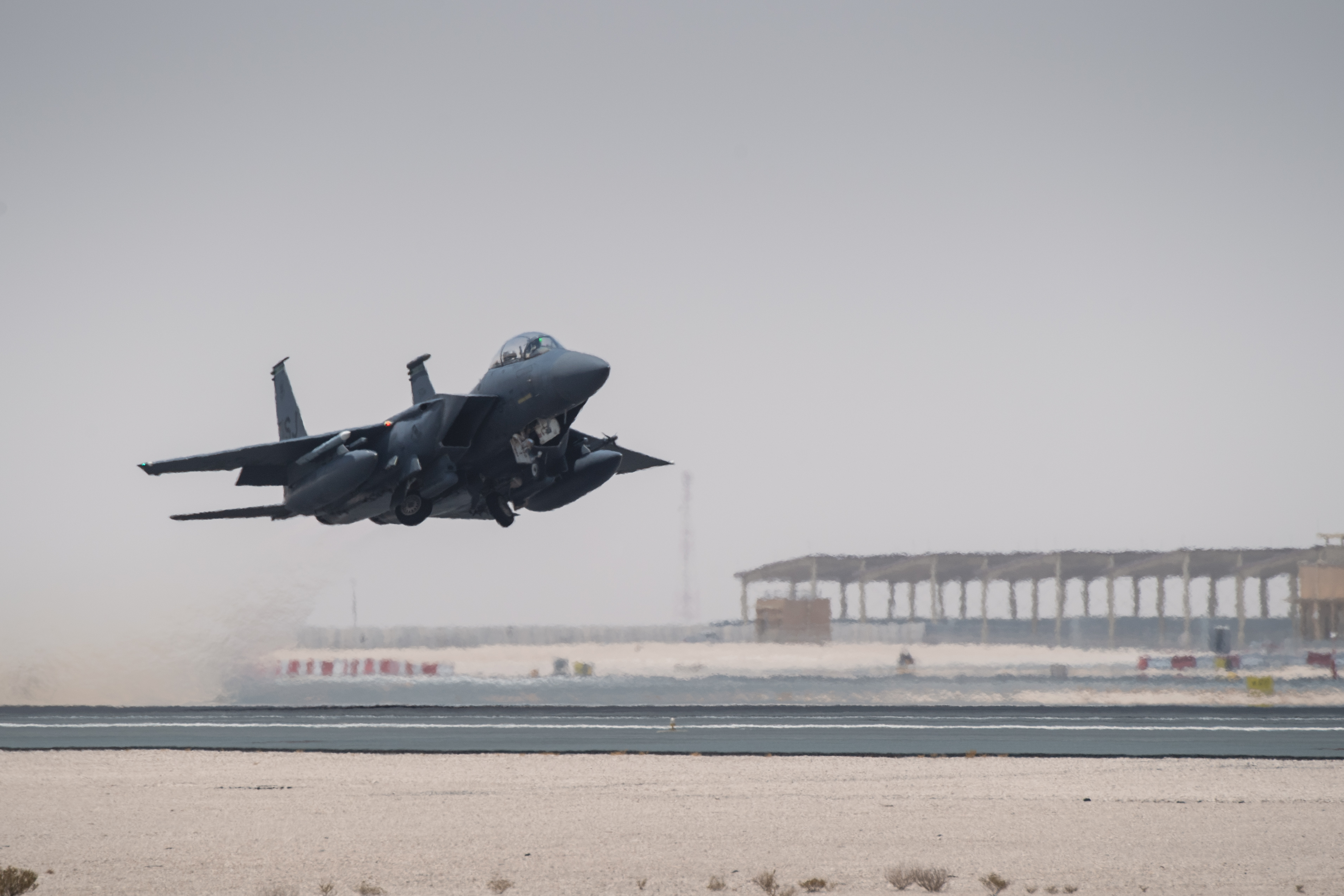US Air Force A-10 Thunderbolt IIs and F-15E Strike Eagles recently participated in exercise Sky Shield 9 alongside the Qatar Emiri Air Force.
This joint exercise, aimed at strengthening defense capabilities, is a crucial step in building a strategic foundation for future engagements in support of the combined defense of the Arabian Peninsula.
The A-10 Thunderbolt II, known for its close air support capabilities, and the F-15E Strike Eagle, renowned for its versatility in both air-to-air and air-to-ground missions, showcased their operational prowess during the exercise.
The exercise was conducted by the US Central Command (CENTCOM), which oversees American military operations in the Middle East.
According to the US Department of Defense, “Exercise Sky Shield is an agile combat employment exercise focused on enhancing interoperability and ensuring regional security.”

The service did not specify the exact dates of the exercise or disclose which aircraft from the Qatari Air Force were involved.
Additionally, US AFCENT (US Air Forces Central) has not issued any further details or a press release regarding the event. However, AFCENT did share a post on social media platform X (formerly Twitter) featuring photos of the A-10 Thunderbolt IIs and F-15E Strike Eagles participating in the exercise.
AFCENT’s tweet read, “Recently, @usairforce A-10 Thunderbolt IIs and F-15E Strike Eagles conducted exercise Sky Shield 9 alongside the Qatar Emiri Air Force, building a strategic foundation for future engagements in support of the Combined Defense of the Arabian Peninsula.”
Recently, @usairforce A-10 Thunderbolt IIs and F-15E Strike Eagles conducted exercise Sky Shield 9 alongside the Qatar Emiri Air Force building a strategic foundation for future engagements in support of the Combined Defense of the Arabian Peninsula.@CENTCOM pic.twitter.com/cQgebM6bbA
— US AFCENT (@USAFCENT) July 22, 2024
In addition to bolstering military capabilities, exercises like Sky Shield serve as a platform for fostering mutual understanding and cultural exchange between the US and Qatari forces.
The interactions during the exercise also help to build camaraderie and strengthen the professional relationships that are vital for future collaborations.
A-10 and F-15 Aircraft In The Region
As the geopolitical dynamics in the Middle East evolve, the ability to carry out joint operations with regional allies is crucial for maintaining a robust defense posture.
The presence of different types of aircraft, such as the A-10 Thunderbolt II and the F-15E Strike Eagle, illustrates the US Air Force’s versatility in addressing various mission requirements in the region.
The A-10 Thunderbolt II, known for its close air support capabilities and slower speed, contrasts significantly with the F-15E Strike Eagle, which is known for its high-speed and multifaceted operational roles.
This contrast highlights the range of missions the US Air Force is equipped to undertake in the Middle East. Last year, the US Air Force deployed the A-10 Thunderbolt II to the region, significantly enhancing its bomb-carrying capacity to nearly triple its load.
Despite this upgrade, some critics argued that relying on the aging A-10s instead of more advanced aircraft might undermine US military effectiveness in the region. They contended that the Warthog, as the A-10 is nicknamed, might not be as effective compared to newer, more advanced planes.

However, the US Air Force emphasized the A-10’s utility in strategic roles, including patrolling the Strait of Hormuz, where it can counter potential threats from Iranian vessels that have previously harassed naval and commercial shipping.
Nonetheless, the A-10’s limitations are evident. Unlike supersonic aircraft or strategic bombers like the B-52 Stratofortress, the A-10 lacks the speed and range necessary for some strategic missions. Consequently, the US Air Force has decided to retire the A-10 fleet, with 42 aircraft scheduled for decommissioning this year and the remaining 260 to follow in the coming years.
In contrast, the F-15E Strike Eagle represents a more advanced and formidable asset capable of deterring contemporary threats in the region. The effectiveness of the F-15 was demonstrated recently when US Air Force F-15s intercepted and destroyed multiple drone swarms, defending Israel from Iranian aggression.
In May, the Air Force released images of the F-15E Strike Eagles returning to RAF Lakenheath in the UK, adorned with distinctive nose art and markings celebrating their successful missions.
Earlier in February, the US conducted airstrikes in Iraq and Syria in response to over 170 attacks on American troops. Additionally, in April, US aircraft, including F-15Es from the 494th and 335th Fighter Squadrons, played a crucial role in neutralizing more than 70 drones launched by Iran targeting Israel during a significant offensive.
The varied capabilities of the A-10 and F-15E show the US Air Force’s strategic adaptability in addressing the complex security challenges of the Middle East.
- Contact the author at ashishmichel(at)gmail.com
- Follow EurAsian Times on Google News




